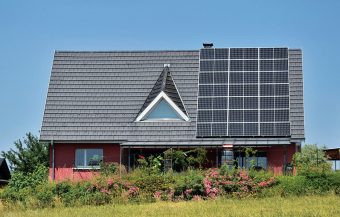In recent years, countries around the world have set ambitious environmental goals. For some, these goals pose challenges that are not easily overcome, while others face failure. However, Hungary stands out as a country taking ecology seriously, prioritizing the development of solar energy, energy storage, and electric vehicles. Following its success in 2023, Hungary continues its intense efforts to advance environmental progress in 2024.
Hungary has exceeded its initial goals outlined in its National Energy and Climate Plan (NECP), which aims to reach 6.5 GW of solar energy capacity by 2030. This goal was already achieved by 2024, prompting a revision that increased the target to 12 GW. Last year alone, Hungary’s solar capacity grew by a record 1,632 MW.
Investments in Renewable Energy

At the beginning of 2024, Hungary expanded its Napenergia Plusz program, offering subsidies of five million forints (about 13,000 euros) for the installation of solar panels and energy storage systems. The program provided a budget of 75 billion forints (about 197 million euros) to help households reduce electricity costs and become more energy-inde pendent. In the first month of the year, more than 400 contractors were registered, and over 21,500 households applied for subsidies. Due to high demand, the program’s budget was increased by 30 billion forints (about 79 million euros), enabling subsidies for more than 25,000 households.
According to the official website of the Hungarian Ministry of Energy, data from the transmission system operator MAVIR shows that, by July 2024, Hungary had installed 6,712 MW of solar power capacity. Of this total, the largest portion—3,678 MW—came from industrial facilities, meaning that nearly 90 percent of systems with capacities greater than 50 kW were operational during peak energy de – mand periods. Additionally, MAVIR noted that if this growth trend con – tinues, Hungary’s solar energy capa – city could increase by more than 1 GW in 2024, consistent with the growth seen in the past two years. Regarding households, around 270,000 solar systems are currently in operation, three-quarters of which are rooftop installations, marking a thirtyfold increase in the last decade.
IN FOCUS:
- Furniture and Wood – The Driving Force of Bosnia and Herzegovina’s Wood Industry
- WWF Adria Supports Innovative Environmental Projects
- Citizen Participation in the Energy Transition: Towards a Fair and Inclusive Society

Due to the significant rise in so – lar capacity and the growing use of other renewable energy sources, the Hungarian government has laun – ched several important programs to support the development of this sector. These include initiatives aimed at improving energy storage infrastructure, which ensures a stable energy supply and the integration of renewable sources into the power grid.
The first program was launched in January 2024 with a budget of 62 billion forints (163 million euros). The goal was to help businesses build energy storage capacities in the industrial sector, aiming to increase storage capacity twentyfold from the current 20 MW by the summer of 2026. According to the Ministry of Energy, current capacities could be increased fiftyfold by 2030.
In June, Zsófia Koncz, State Secretary at the Ministry of Energy, stated that 2024 is crucial for modernizing Hungary’s electricity grid. The government supported these investments with 160 billion forints (around 421 million euros), including constructing new substations and expanding existing transmission lines. These measures are important for improving the supply security of Budapest and Eastern Hungary.
Nuclear Energy – Key to the Future
Hungary also emphasizes the importance of nuclear energy, with the Paks 1 and Paks 2 power plants expected to produce half of the country’s energy needs by the 2030s. With the full operation of the total solar and nuclear energy capacity, the country can fully supply itself with technologies that produce zero carbon emissions. However, due to unstable weather conditions, which affect the full capacity of solar energy, nuclear energy remains crucial for Hungary. This was confirmed by State Secretary Zsófia Koncz, who stated that extending the operational life of Paks 1 and completing the construction of Paks 2 is essential.
Another energy source that Hungary is focusing on is geothermal energy. For years, the country has ranked among the top five in Europe for direct use of geothermal energy, and there are plans for a significant increase in its use by 2030. The current usage of around 6.4 petajoules is expected to increase to 12–13 petajoules, raising the share of geothermal energy in heat production from 6.5 percent to 25–30 percent. The state will provide 165 billion forints (about 434 million euros) for geothermal investments, including 34 billion forints (around 89 million euros) to reduce geological and financial risks.
Prepared by Katarina Vuinac
The story was published in the new issue of the Energy portal Magazine ENERGY TRANSITION





